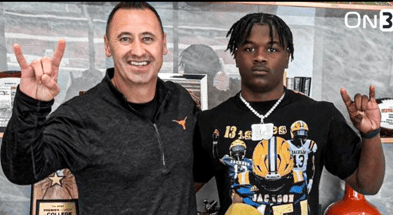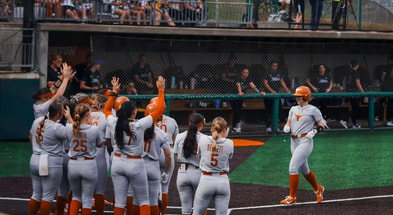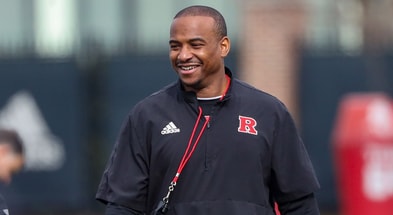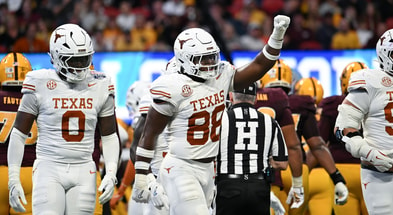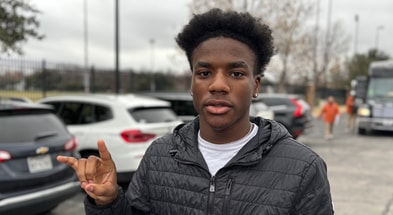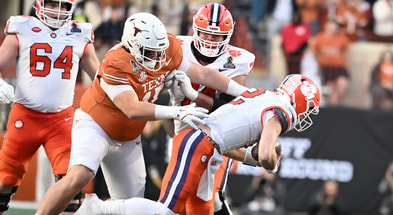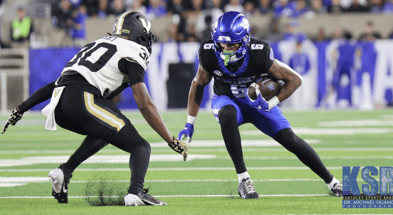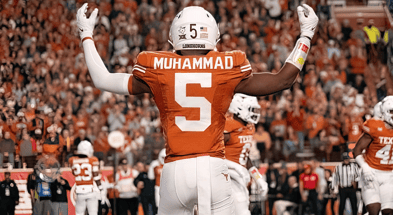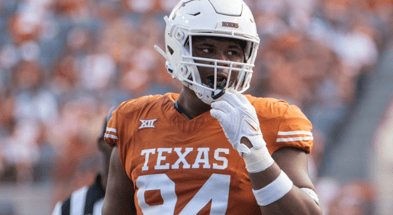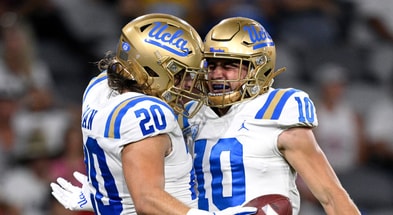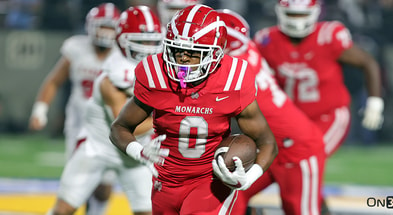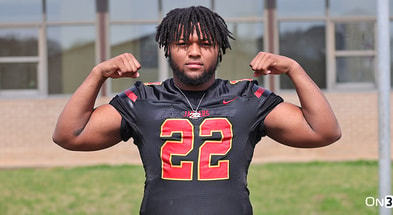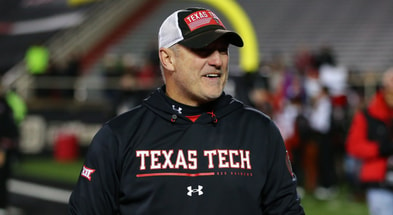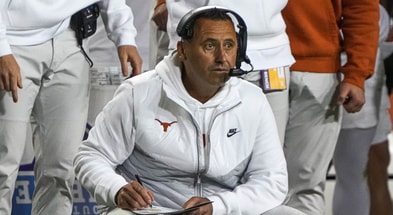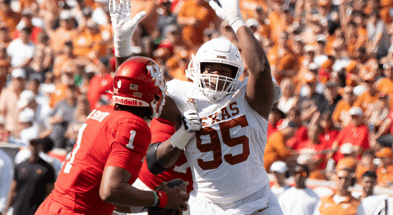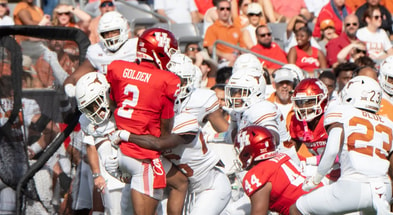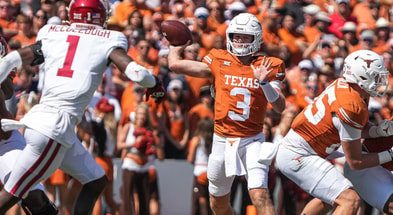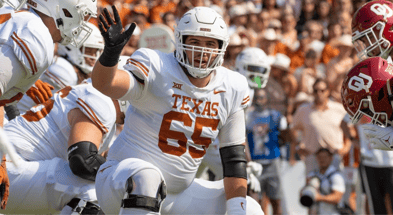Gameplan: Steve Sarkisian offense 101

While Texas is still sorting out its ideal offensive lineups at most every unit (particularly quarterback, but especially receiver, but don’t forget the O-line!), now is as good a time as any to go over the Steve Sarkisian offense.
How does this system work? What is Texas trying to do and what sort of personnel do they need to find on the roster to eventually attack teams in a fashion comparable to what we saw at Alabama last season?
RPO spread offense 101
The Steve Sarkisian offense is ultimately a RPO spread of the sort common to the modern college game. There is tremendous overlap between the RPO/play-action infused Air Raid offenses in the Big 12 and Sark’s approach.
The starting point is the inside zone/gap run game, usually featuring an off-ball tight end who functions as a fullback hybrid I like to refer to as an “ancillary.” By using an ancillary you can mix downhill inside zone schemes and iso/lead variations with gap schemes like power and counter.
There’s an upside and downside here as well. The tight end will often guide the defense to the ball, at least to where the point of attack will be where the offense is aiming to punch a hole through the front. So naturally defenses will send defenders there quickly to blow up the design. The upside is any rotation by the secondary to try and do so clears up the reads on RPOs and creates spacing for play-action.
Here’s a typical RPO scheme the Sarkisian offense will employ.
For years and years, one of the most popular play-action schemes to accompany the inside run game with an off-ball tight end is “Y-cross.” Here’s Sark’s version:
Sark has been calling this “spear” on the clinic trail, it’s basically the exact same Y-cross route combination which has torched the Big 12 since Oklahoma introduced the Air Raid to the league in the new century. You can use it to set up the backside post against two-high coverages or to throw the frontside post or the over (cross) route against one-high coverages.
It’s very hard to defend without getting fantastic drops from the linebackers, which is difficult if they are otherwise racing to fit the run downhill when they see the off-ball tight end hit the line of scrimmage for a power run concept.
Between the RPOs and play-action concepts generating run/pass conflicts in space for the defense, there are two inevitable responses from overstressed defenses. Response one is to drop everyone into coverage, like Iowa State, play as disciplined as possible and hope the offense can’t cut you to death underneath with short throws and runs. Response two is to play some sort of man or tight matching coverage.
The Sarkisian offense’s response to the second defensive response is the exact same as everyone else’s. He calls for the mesh play.
Tight ends, running backs, and wide receivers all cross paths and trade off who is attacking which area of the field. The defense has to first make sure no one runs free and then successfully cover everyone, even if a linebacker has keep up with an outside receiver running across his zone or a corner has to close and tackle a running back or tight end.
That’s the basis of the entire offense summed up into three basic plays. Power run game with receivers running into space to keep defenses from concentrating at the point of attack, play-action to land big shots when defenses start to creep up or over commit, mesh (and other man-beaters) to get receivers open when teams start simplifying assignments to avoid run/pass conflicts. It’s a brilliant and efficient system and common to the Big 12. Dana Holgorsen, Lincoln Riley, Sonny Cumbie, Matt Rhule, Larry Fedora, Mike Gundy, they’ve all been at this for years now.
RPO spread personnel
There are certain types of players people tend to target when they want to run this system. Mike Gundy’s prospective 2021 offensive lineup gives insight into how a school with modest but not elite recruiting aims to fill the various needs.
Mike Gundy has been at this for a while now. He has a similar history as Sarkisian, coming from a pro-style background with an emphasis on play-action pass before integrating Air Raid passing, spread sets, and RPOs after hiring Dana Holgorsen at the turn of the decade.
The Cowboy offense tries to get as much speed at the skill positions as they can find, a sturdy off-ball tight end who was a good enough athlete (often found from the walk-on ranks), and then an O-line chosen for size. The Cowboys rely heavily on their strength program under Rob Glass. Their methodology has always involved recruiting big framed linemen and relying on Glass to physically transform them into a moving wall.
Quarterback is where things get tricky in the RPO spread. There’s a good case to be made that versatile, highly coordinated, and quick thinking players with moderate athleticism are better than powerful athletes with lightning speed and/or a rocket arm. Spencer Sanders’ struggles relative to guys like Clint Chelf or Taylor Cornelius tell the story here, although we’ll see if the blue chip has a breakthrough in 2021.
Anyway, size and power in the box, speed on the perimeter, and quick-thinking field generalship at quarterback are the key attributes for this system.
Sarkisian’s brand of RPO spread
There’s a big difference between running an offense of any sort at Oklahoma State and doing so at Alabama, USC, Texas, or honestly even at Washington. The schools Sarkisian has coached at can recruit a different caliber of athlete at a lot of positions than at Oklahoma State or most of the other schools in the Big 12.
The upshot is you can run the same sort of system but regularly mix in more difficult or athletically demanding features because your players can execute it.
Top 10
- 1New
Kirby Smart
Calls out tampering
- 2
Morez Johnson
Illinois forward transfers to Michigan
- 3
Buzz Williams
Maryland hires Texas A&M head coach
- 4
Tre Donaldson
Michigan guard enters portal
- 5Hot
Pat McAfee
Ole Miss student to sue ESPN
Get the On3 Top 10 to your inbox every morning
By clicking "Subscribe to Newsletter", I agree to On3's Privacy Notice, Terms, and use of my personal information described therein.
One of Sark’s extra features is using a diversity of run game schemes. You will see this in some locales in the Big 12, but often it’s tricky to master multiple run game schemes for two reasons. One, it’s more to teach so you have to coach extremely well. Two, the more schemes you put on a line’s plate the more techniques and skills you’re asking them to master. Sometimes the mind is willing but the body is too slow or uncoordinated. Recruiting star athletes across the line is a huge boost if you want guards who can pull, drive block, reach block, etc.
Another Sarkisian offense feature is full field RPOs.
Defenses regularly teach their players two tricks for stopping the RPO, linebackers key the tight end and defenders react to which side of the quarterback the running back approaches for the handoff.
If the running back is on the slot side, the RPO is often for the slot receiver because pulling the ball to throw a bubble or slant doesn’t require much footwork. Throwing back to the receiver on the other side of the formation requires the quarterback to flip his hips and involve a lot more footwork and skill to deliver an accurate ball in a timely fashion.
But defenses know this, so they’ll have the defensive backs aligned to the running back’s side cover the receivers while the defensive back(s) opposite crash to stop the run.
Now the defense can still send a safety to outnumber the run game without putting anyone in run/pass conflict against the RPO.
But Sark is all in on RPOs and he recruits quarterbacks with an eye for who has the footwork, coordination, and overall throwing skill to use his eyes and set his feet to throw the ball to the opposite side of the formation.
Now you’re back to a 1-on-1 matchup between a receiver and a corner with high stakes for the defense if they lose. There’s no answer on defense save for taking a chance somewhere in man coverage or sitting back in two-deep coverage and finding a way to stop the run up front without sending help.
The biggest difference between the Sarkisian offense based on RPO spread concepts and that of most Big 12 schools is how he runs play-action. Before the 2020 Alabama Tide offense you didn’t see as much of this in college football.
Auburn is sitting in quarters coverage here and the safeties aren’t triggering downhill on the run, instead they’re waiting for those dreaded glance routes and trying to sit on those. If your safeties are athletic enough, you can have them sit on the RPO passes and then close on the run after the quarterback commits to handing off. Teams like TCU often have safeties who are disciplined and athletic enough to do so and still arrive in time to limit the run game.
Sark’s big addition to the world of RPO spread offense was to make the play-action look like RPOs. This play against Auburn looks like an RPO but then the quarterback is pump-faking the glance route and the offensive line is starting to step backwards in pass protection. The receiver fakes the glance and then flies up field past a safety for an easy score.
It’s brilliant, nasty stuff, but it obviously requires a certain level of commitment and overall skill and athleticism. Tons of teams would love to take as many double move shots as Alabama did last season, but they didn’t have blazing fast receivers worth taking shots to, or they couldn’t count on their offensive line to hold up long enough to complete the fake successfully.
Therein lies the trick for Texas in 2021. Will this offensive line and wide receiver corps be ready and able to allow the Sarkisian offense to take several double move deep shots every game? Will the quarterback have the skill to spray the ball around the field? At that point Texas won’t be just another RPO spread team in the Big 12.
Cover photo by Shane Ware for Inside Texas

